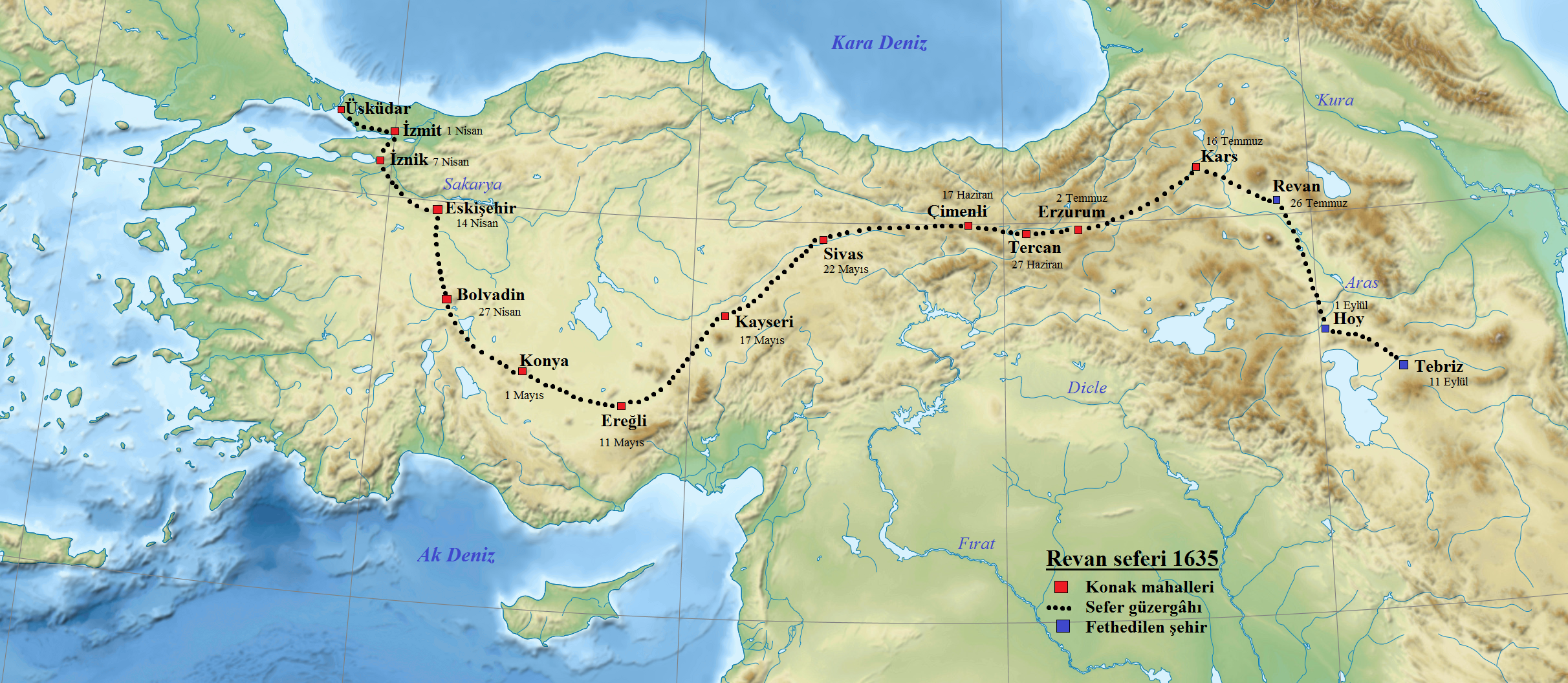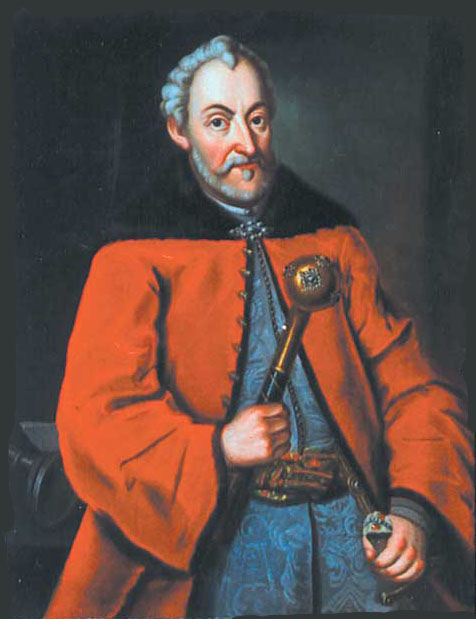|
Ayşe Sultan (daughter Of Ahmed I)
, house = Ottoman , house-type = Dynasty , father = Ahmed I , mother = Kösem Sultan , issue = ''Third marriage''Sultanzade Mustafa BeySultanzade ''Fülan'' Bey , birth_date = 1605 or 1608 , birth_place = Topkapı Palace, Constantinople, Ottoman Empire (present day Istanbul, Turkey) , death_date = 1657 (aged 51-52 or 48-49) , death_place = Istanbul, Ottoman Empire , burial_place = Sultan Ahmed Mosque, Istanbul , religion = Sunni Islam Ayşe Sultan ( ota, عائشه سلطان; "''The living one''" or "''womanly''"; 1605 or 1608 – 1657) was an Ottoman princess, daughter of Sultan Ahmed I (reign 1603–17) and Kösem Sultan, half-sister of Sultan Osman II (reign 1618–22) and sister of Sultan Murad IV (reign 1623–40) and Sultan Ibrahim (reign 1640–48) of the Ottoman Empire. Ayşe is known for her many politically motivated marriages. Life Early life Born in Istanbul, Ayşe Sultan was one of Ahmed's daughters by his fav ... [...More Info...] [...Related Items...] OR: [Wikipedia] [Google] [Baidu] |
Nasuh Pasha
Nasuh Pasha was an Ottoman statesman of Albanian origin. He was grand vizier of the Ottoman Empire from 5 August 1611 until 17 October 1614.İsmail Hâmi Danişmend, Osmanlı Devlet Erkânı, Türkiye Yayınevi, İstanbul, 1971 (Turkish) He was from Gümülcine (modern Komotini) and was a damat to the Ottoman dynasty, as he married an Ottoman princess. He was executed for corruption by Ahmed I in 1614. Biography Nasuh Paha born in Gümülcine, he was an Ottoman politician of Albanian origin. He went young to Istanbul and obtained minor assignments from the menagerie . Thanks to the support of his friend Mehmed Agha he quickly got up and was soon appointed voivod of the Qaḍāʾ of Zile , in Anatolia , and then governor of Fülek in Hungary. He married the daughter of Kurdish prince Mir Sheref becoming rich and powerful, which made him proud and cruel. In 1602 he was appointed governor of Sivas , in 1603 of Aleppo and in 1606 of Diyarbekir . In 1606 he was appointed thi ... [...More Info...] [...Related Items...] OR: [Wikipedia] [Google] [Baidu] |
Ibrahim Of The Ottoman Empire
Ibrahim (; ota, ابراهيم; tr, İbrahim; 5 November 1615 – 18 August 1648) was the Sultan of the Ottoman Empire from 1640 until 1648. He was born in Constantinople, the son of Sultan Ahmed I by Kösem Sultan, an ethnic Greek originally named Anastasia. He was called Ibrahim the Mad ( tr, Deli İbrahim) due to his mental condition and behavior. However, historian Scott Rank notes that his opponents spread rumors of the sultan's insanity, and some historians suggest he was more incompetent than mad. Early life Ibrahim was born on 5 November 1615, the son of Sultan Ahmed I and his Haseki Sultan and perphaps legal wife, Kösem Sultan. When Ibrahim was 2, his father suddenly died, and Ibrahim's uncle Mustafa I became the new sultan. By that time, Kosem Sultan and her children, including young Ibrahim had been sent to the Old Palace. After the succession of his brother Murad IV, Ibrahim was confined in the Kafes, which affected his health. Ibrahim's other brothers Şehz ... [...More Info...] [...Related Items...] OR: [Wikipedia] [Google] [Baidu] |
Ottoman–Safavid War (1623–1639)
The Ottoman–Safavid War of 1623–1639 was the last of a series of conflicts fought between the Ottoman Empire and Safavid Empire, then the two major powers of Western Asia, over control of Mesopotamia. After initial Persian success in recapturing Baghdad and most of modern Iraq, having lost it for 90 years, the war became a stalemate as the Persians were unable to press further into the Ottoman Empire, and the Ottomans themselves were distracted by wars in Europe and weakened by internal turmoil. Eventually, the Ottomans were able to recover Baghdad, taking heavy losses in the final siege, and the signing of the Treaty of Zuhab ended the war in an Ottoman victory. Roughly speaking, the treaty restored the borders of 1555, with the Safavids keeping Dagestan, eastern Georgia, Eastern Armenia, and the present-day Azerbaijan Republic, while western Georgia and Western Armenia decisively came under Ottoman rule. The eastern part of Samtskhe (Meskheti) was irrevocably lost to th ... [...More Info...] [...Related Items...] OR: [Wikipedia] [Google] [Baidu] |
Yerevan
Yerevan ( , , hy, Երևան , sometimes spelled Erevan) is the capital and largest city of Armenia and one of the world's oldest continuously inhabited cities. Situated along the Hrazdan River, Yerevan is the administrative, cultural, and industrial center of the country, as its primate city. It has been the capital since 1918, the fourteenth in the history of Armenia and the seventh located in or around the Ararat Plain. The city also serves as the seat of the Araratian Pontifical Diocese, which is the largest diocese of the Armenian Apostolic Church and one of the oldest dioceses in the world. The history of Yerevan dates back to the 8th century BCE, with the founding of the fortress of Erebuni in 782 BCE by King Argishti I of Urartu at the western extreme of the Ararat Plain. Erebuni was "designed as a great administrative and religious centre, a fully royal capital." By the late ancient Armenian Kingdom, new capital cities were established and Yerevan declined in ... [...More Info...] [...Related Items...] OR: [Wikipedia] [Google] [Baidu] |
Venice
Venice ( ; it, Venezia ; vec, Venesia or ) is a city in northeastern Italy and the capital of the Veneto Regions of Italy, region. It is built on a group of 118 small islands that are separated by canals and linked by over 400 bridges. The islands are in the shallow Venetian Lagoon, an enclosed bay lying between the mouths of the Po River, Po and the Piave River, Piave rivers (more exactly between the Brenta (river), Brenta and the Sile (river), Sile). In 2020, around 258,685 people resided in greater Venice or the ''Comune di Venezia'', of whom around 55,000 live in the historical island city of Venice (''centro storico'') and the rest on the mainland (''terraferma''). Together with the cities of Padua, Italy, Padua and Treviso, Italy, Treviso, Venice is included in the Padua-Treviso-Venice Metropolitan Area (PATREVE), which is considered a statistical metropolitan area, with a total population of 2.6 million. The name is derived from the ancient Adri ... [...More Info...] [...Related Items...] OR: [Wikipedia] [Google] [Baidu] |
Diyarbekir Eyalet
Eyālet-i Diyār-i Bekr , common_name = Eyalet of Diyarbekir , subdivision = Eyalet , nation = the Ottoman Empire , year_start = 1515 , year_end = 1846 , date_start = November 4, 1515II. Uluslar Arası Osmanlı'dan Cumhuriyet'e Diyarbakır Sempozyumu (Türkçe). Diyarbakır Valiliği ve TOBB ETÜ Fen-Edebiyat Fakültesi. II. International Symposium on the Ottoman Empire Republic of Diyarbakir TOBB ETU Diyarbakir Governor's Office and the Faculty of Arts and Sciences. , date_end = , event_start = , event_end = , p1 = Safavid Diyarbakr , flag_p1 = Flag of Shah Tahmasp I.svg , p2 = , flag_p2 ... [...More Info...] [...Related Items...] OR: [Wikipedia] [Google] [Baidu] |
Janissary
A Janissary ( ota, یڭیچری, yeŋiçeri, , ) was a member of the elite infantry units that formed the Ottoman Sultan's household troops and the first modern standing army in Europe. The corps was most likely established under sultan Orhan (1324–1362), during the Viziership of Alaeddin. Janissaries began as elite corps made up through the devşirme system of child levy, by which Christian Albanians, Romanians, Armenians, Bulgarians, Croats, Greeks and Serbs were taken, levied, subjected to circumcision and conversion to Islam, and incorporated into the Ottoman army. They became famed for internal cohesion cemented by strict discipline and order. Unlike typical slaves, they were paid regular salaries. Forbidden to marry before the age of 40 or engage in trade, their complete loyalty to the Sultan was expected. By the seventeenth century, due to a dramatic increase in the size of the Ottoman standing army, the corps' initially strict recruitment policy was relaxed. Civil ... [...More Info...] [...Related Items...] OR: [Wikipedia] [Google] [Baidu] |
Moldavian Magnate Wars
The Moldavian Magnate Wars, or Moldavian Ventures, refer to the period at the end of the 16th century and the beginning of the 17th century when the magnates of the Polish–Lithuanian Commonwealth intervened in the affairs of Moldavia, clashing with the Habsburgs and the Ottoman Empire for domination and influence over the principality. The Magnate Wars (1593–1617) Causes Jan Zamoyski, Polish grand crown chancellor ( kanclerz) and military commander (grand crown hetman), known for his opposition towards the Habsburgs, had been a vocal supporter of Commonwealth expansion in the southern direction. Since the early plans made by Commonwealth King Stefan Batory for the war against the Ottomans, Zamoyski supported them, viewing those plans as a good long-term strategy for the Commonwealth. Any policy that was against the Ottomans was also supported by the Holy See, and Pope Sixtus V strongly expressed his support for any war between the Commonwealth and the Ottomans. Th ... [...More Info...] [...Related Items...] OR: [Wikipedia] [Google] [Baidu] |
Budin Eyalet
Budin Eyalet (also known as Province of Budin/Buda or Pashalik of Budin/Buda, ota, ایالت بودین, Eyālet-i Budin) was an administrative territorial entity of the Ottoman Empire in Central Europe and the Balkans. It was formed on the territories that Ottoman Empire conquered from the medieval Kingdom of Hungary and Serbian Despotate. The capital of the Budin Province was Budin (Hungarian: Buda). Population of the province was ethnically and religiously diverse and included Hungarians, Croats, Serbs, Bosniaks, Slovaks, Muslims of various ethnic origins (living mainly in the cities) and others (Jews, Romani, etc.). The city of Buda itself became majority Muslim during the seventeenth century, largely through the immigration of Balkan Muslims. History In the 16th century the Ottoman Empire had conquered the southern "line of fortresses" (végvár) of the Kingdom of Hungary. After the Battle of Mohács where the Kingdom of Hungary was heavily defeated, and the turmoil ca ... [...More Info...] [...Related Items...] OR: [Wikipedia] [Google] [Baidu] |
Beylerbey
''Beylerbey'' ( ota, بكلربكی, beylerbeyi, lit= bey of beys, meaning the 'commander of commanders' or 'lord of lords') was a high rank in the western Islamic world in the late Middle Ages and early modern period, from the Anatolian Seljuks and the Ilkhanids to Safavid Empire and the Ottoman Empire. Initially designating a commander-in-chief, it eventually came to be held by senior provincial governors. In Ottoman usage, where the rank survived the longest, it designated the governors-general of some of the largest and most important provinces, although in later centuries it became devalued into a mere honorific title. Its equivalents in Arabic were '' amir al-umara'', and in Persian, ''mir-i miran''. Early use The title originated with the Seljuqs, and was used in the Sultanate of Rum initially as an alternative for the Arabic title of '' malik al-umara'' ("chief of the commanders"), designating the army's commander-in-chief. Among the Mongol Ilkhanids, the tit ... [...More Info...] [...Related Items...] OR: [Wikipedia] [Google] [Baidu] |
Üsküdar
Üsküdar () is a large and densely populated district of Istanbul, Turkey, on the Anatolian shore of the Bosphorus. It is bordered to the north by Beykoz, to the east by Ümraniye, to the southeast by Ataşehir and to the south by Kadıköy; with Karaköy, Kabataş, Beşiktaş, and the historic city center of Fatih facing it on the opposite shore to the west. Üsküdar has been a conservative cultural center of the Anatolian/Asian side of Istanbul since Ottoman times with its numerous grand and little historic mosques and dergahs. It is home to about half a million people. Üsküdar is a major transport hub, with ferries to Eminönü, Karaköy, Kabataş, Besiktaş and some of the Bosphorus suburbs. Üsküdar is a stop on the Marmaray rail service at the point where it starts its journey under the Bosphorus, re-emerging on the European side at Sirkeci. Via Marmaray, Üsküdar is linked to Gebze on the Asian side of the city and Halkali on the European side. Üsküd ... [...More Info...] [...Related Items...] OR: [Wikipedia] [Google] [Baidu] |


.jpg)



.png)
